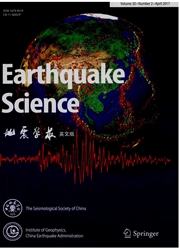

 中文摘要:
中文摘要:
许多近差错的充分的理由运动记录从世界范围的各种各样的构造环境被收集并且被用来学习vertical 的山峰价值比率和反应光谱比率到地面运动的水平部件,集中于地震等级的效果,地点条件,脉搏持续时间,并且统计部件。山峰价值比率和反应光谱比率比在存在地震代码规定的 2/3 价值大的结果表演,和在 vertical 和 horizontal 之间的关系扎根了运动是比较地复杂的。另外,桥性能上的近差错的地面运动的效果被分析,两个都认为材料是非线性的特征和 P ~Δ效果。
 英文摘要:
英文摘要:
A wide variety of near-fault strong ground motion records were collected from various tectonic environments worldwide and were used to study the peak value ratio and response spectrum ratio of the vertical to horizontal component of ground motion, focusing on the effect of earthquake magnitude, site conditions, pulse duration, and statistical component. The results show that both the peak value ratio and response spectrum ratio are larger than the 2/3 value prescribed in existing seismic codes, and the relationship between the vertical and horizontal ground motions is comparatively intricate. In addition, the effect of the near-fault ground motions on bridge performance is analyzed, considering both the material nonlinear characteristics and the P-A effect.
 同期刊论文项目
同期刊论文项目
 同项目期刊论文
同项目期刊论文
 期刊信息
期刊信息
